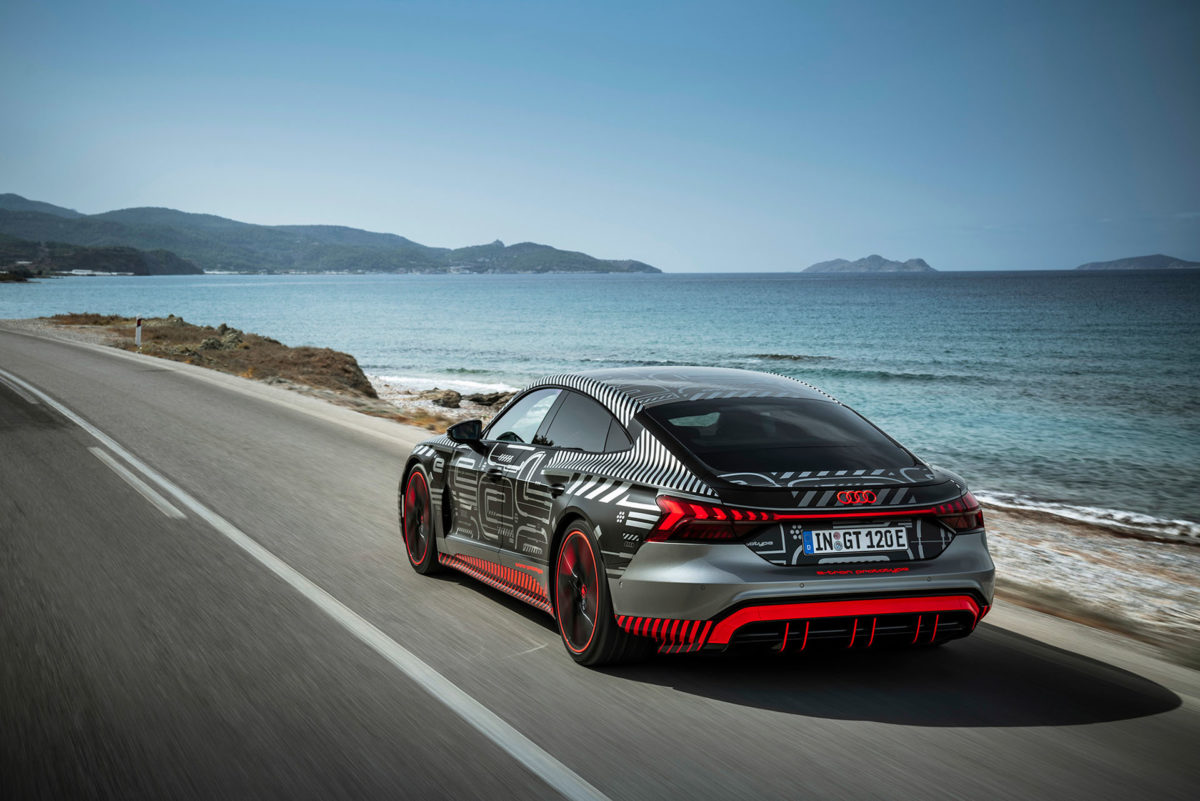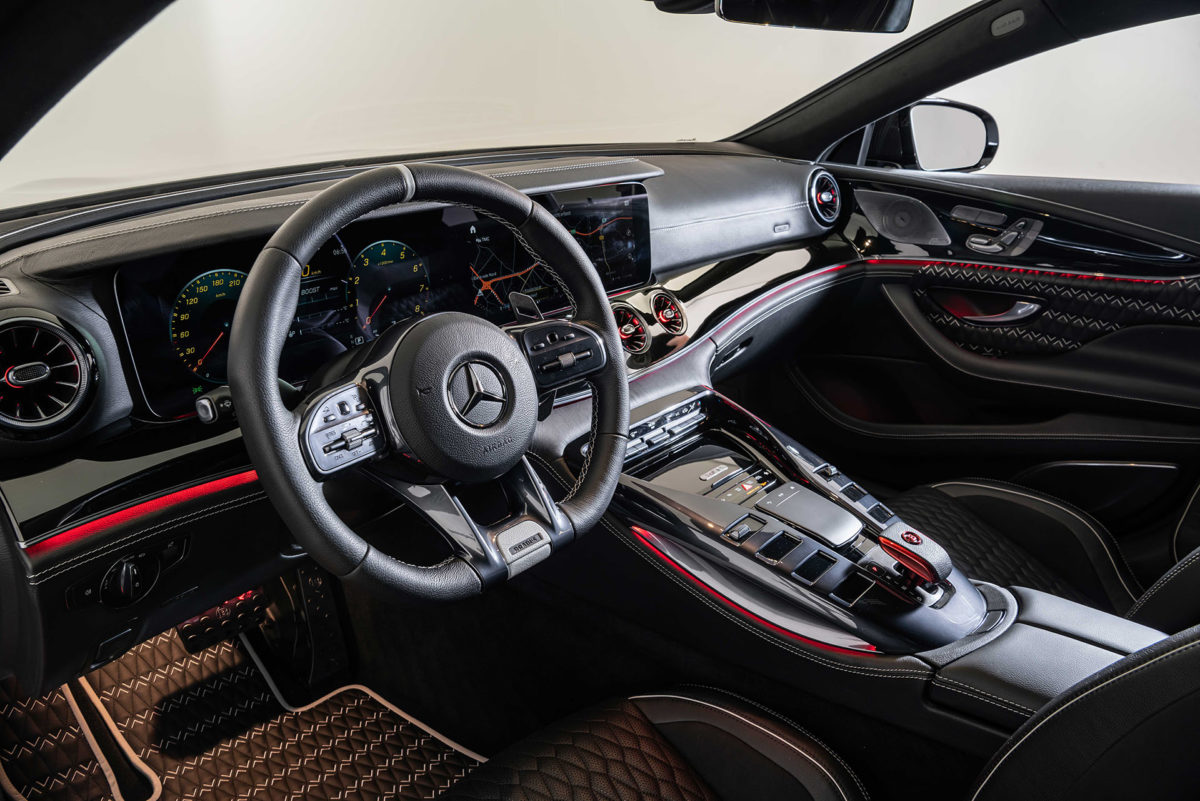The most important of them are the cars that grew out of racing models, luxury grunts, modified by tuning studios, and ultra-modern electric supercars, whose creators seem to have intended to send the more conservative competitors to the dustbin of history. Anyway, so far representatives of the indicated branches of motorsport coexist quite peacefully both on the autodromes and on public roads.
Brand loyalty
It would seem that Volkswagen Group needs two electric sports cars on the same platform. After all, there is the innovative Porsche Taycan, which successfully wrests customers from the American Tesla. All the matter is in boom on luxurious electric “bolides” because of which Ingolstadt electric grunt cars Audi e-tron GT are ready to rush in chase of “green” “lighters” from Stuttgart. Production of this Audi novelty has already started at the plant in Neckarsulm, Germany, and sales are scheduled for spring. Despite the fact that Audi keeps details about the novelty in secret, it is known that e-Tron GT shares with Taycan the PPE platform and electrical system working at 800V. The peak output of the most powerful twin-engine variant will exceed 650 hp, which will provide acceleration to a “hundred” in about 3 seconds. And also according to the laws of corporate subordination, the most productive e-tron GT will be slightly slower than the top-end 761 hp Porsche Taycan. Traction battery meanwhile, just the same will be integrated into the floor panel to lower the center of masses, to replenish the charge from the proprietary terminal at 80% will take only 20 minutes, and a range of 402 km. In the exterior – it is clearly visible in the photo top-version RS e-tron GT in light camouflage – combines design approaches show-car e-tron GT and related Porsche Taycan. Journalists, who have already tested the Ingolstadt “electric car” assure that Audi e-tron GT goes a little bit softer and calmer than the “donor” Porsche model. Moreover, the four-seater interior is designed in the characteristic style of Audi sports cars with the aim to loyal fans of the brand.
Only for the Chosen People
The novelty Ferrari 488 GT Modificata is positioned as a sports coupe for track days – events for non-professionals, who can go to the race track and squeeze out of the sports car maximum. The “peculiarity” of the “Italian” is in the following – it is constructed on the basis of 488 GT3 and 488 GTE racing cars, but it is not restricted by the strict FIA regulations. To be more exact, the 488 GT Modificata is equipped with a 3.9-liter turbo-v8 petrol engine boosted to 700 hp, a gearbox with a track-specific calibration feature, an adjustable suspension from the 488 GTE and Brembo brakes from the 488 GT3. The modified bodykit not only adds to the “two-door” external aggression, but also increases downforce. The body is made partially of aluminum and partially of carbon fiber. Zest interior – steel safety cage, as well as chairs-buckets, a complex V-Box for recording telemetry and TPMS to measure the temperature and tire pressure. And, of course, Ferrari has provided ample opportunity to customize the exterior and interior. Competizioni GT club members will be able to try the 488 GT Modificata from March in amateur races, including the world-famous Monza, Suzuka and Nürburgring tracks. At the same time, the car is not homologated for any official championship, nor for public roads. Only Ferrari Club Competizioni GT community members can get their hands on this unique race car. Welcome to the club!
Pick a route!
The engineering of the Lamborghini Huracan STO supercar is borrowed from the racing models from Sant’Agata Bolognese – Huracan Super Trofeo EVO and Huracan GT3 EVO. However, unlike this pair, the Huracan STO is homologated for public roads, which, in fact, is signaled by the acronym STO – Super Trofeo Omologato. Gasoline 5,2-liter 640-hp V10 transfers power to back wheels through 7-speed “preselectiv”, providing acceleration up to 100 km/h for 3 seconds and “maximum” 310 km/h. And oh, those Italians! You can listen to this “hot” engine singing on the web-page of the brand, having started the corresponding audio track. The chassis here is fully steerable and tuned in a sporty rigid way. The Brembo braking system is resistant to ultra-high loads, and the rear antifender is manually adjusted for specific tracks. An “air bucket” for cooling and a stabilizer keel are installed above the engine compartment. The body, inspired by the Lamborghini Miura and Sesto Element models, consists of 75% carbon fiber. The hood and front wings are made as one unit, which Lamborghini dubbed Cofango from the Italian words “cofano” (hood) and “parafango” (wing). Certainly, the sports car was cut according to a principle “lighter”. Let’s say, instead of aluminum wheels were used magnesium ones, with central nut fastening. The interior’s ceiling and the front panel are covered with alcantara and seats, upholstery elements and even floor mats are made of carbon fiber. The most interesting thing is that the Huracan STO is the first Lamborghini track car to be released outside the autodrome. In this regard, engineers had to take into account, including the requirements of the traffic regulations. Sales of the Huracan STO will start in spring.
More powerful
The four-door coupe Mercedes-AMG GT 63 S 4Matic + exchanges a “hundred” for some 3.2 seconds at “maximum” 315 km / h, relying on a gasoline 4-liter 639-horsepower “bi-turbo eight” and a full drive. However, the atelier Brabus from the German Botrop managed to turn this dashing Mercedes into a real monster with tolerance both on the track and on ordinary roads. For this Brabus Rocket 900 was allocated an aggressive carbon-fiber bodykit, enlarged air intakes, widened wheel arches and an antifender on the fifth door. Forged wheels Brabus Monoblock Z were equipped with aerodynamic pads and shod in 21-inch rubber front and 22-inch rear. The suspension with air elements was also shaken up and received an extreme sport mode with 25 mm lowering of the body. But the main metamorphosis happened with the engine. Its working volume was increased to 4.5 liters, the turbocharging system was replaced and as a result the engine ended up with 900 hp. Channeling power to the wheels of both axles through a 9-speed automatic Speedshift MCT, the extreme automobile shoots up to “hundred” for 2,8 seconds with “maximum speed” limited at 330 km/h. And, of course, the interior designers have taken care of exclusivity – equipment and decoration are stipulated with the customer. The chic base version has bucket-shaped seats, trimmed with quilted black leather, dominated by elements of alcantara, carbon fiber and metal plates, signaling that this is one of only ten existing Brabus Rocket 900.
On the flight!
The Bugatti Chiron Sport Les Légendes du Ciel supercar pays tribute to the Bugatti drivers who served in the French Air Force: Albert Divot, Robert Benoit and Bartolomeo Costantini, as well as Roland Garros, another renowned aviator who also raced on land in his Bugatti Type 18. It is based, as one may guess, on Chiron Sport, which design was lightened with carbon fiber elements (flying, so flying!), provided retractable rear spoiler and radiator grille with bars a la trajectory of planes fanning out at the parade. Even more, the body is painted in a matte shade of Gris Serpent, typical for fighters of the 20’s, and the sills are marked with inserts in the color of the French tricolor. The interior recreates the atmosphere of fighter cabins from the beginning of the last century. Seats and interior elements are trimmed with brown Gaucho leather, and the stitching duplicates the curves of the radiator grille bars. There is also aluminum inserts, Bugatti Type 12 sports car and Nieuport 17 biplane images on the door panels and propellers on the headrests. For extra fee connoisseurs of the exclusive will be also offered glass sections in the roof – so to say – fighter’s hood. Gasoline 8-liter turbocharged W16 develops 1500 hp, working in liaison with 7-speed preselective “robot” and a four-wheel drive. This “squadron” provides acceleration up to “hundred” for 2,5 s and speed ceiling of 420 km/h. Suspension, brakes and steering settings are uncompromising. Only a select few will be able to fly on the track and public roads – the special series is limited to two dozens of copies.
A record!
Another freshly baked hypercar, the Hennessey Venom F5, is named after the highest tornado category, the F5. According to the Fujita scale, F5 tornadoes are accompanied by wind speeds from 419 to 512 km/h. The peak speed of the “American” according to calculations should exceed 500 km/h and acceleration to 100 km/h takes 2.6 seconds, which puts this extreme car on a par with “charged” versions of the Bugatti Chiron and Koenigsegg Jesko. The 6.6-liter twin-turbocharged petrol V8 produces an incredible 1,842 hp. The pull is also insane, with 1,617 Nm sent exclusively to the rear wheels via a seven-speed single-clutch “robot”. In addition to the adaptive chassis highlight of equipment Hennessey Venom F5 – five modes of movement: Sport, Track, Drag, Wet and the most “otvyazny” F5. The latter is a kind of racing prize: it is unlocked for customers only after they have completed special training on the range of the atelier in Texas. The Venom F5’s carbon fiber bodywork is sharpened for aerodynamics. The coupe has a razor-sharp splitter, huge air intakes and raised doors, and the optional Track Package adds an even more aggressive front splitter and rear anti-wing. The interior of the twister car is designed in a minimalist way. In front of the driver is an airplane-inspired steering wheel and a pair of 7-inch and 10-inch displays. The bucket seat frames and cabin elements are lined with beige leather and decorated with carbon fiber inserts. Only 24 of these “two-doors” are scheduled to be built at the facility in Seeley, and only twelve of them will leave the U.S.
Photo courtesy of audi-mediacenter.com, ferrari.com, lamborghini.com, brabus.ua, hennesseyspecialvehicles.com, bugatti.com
































